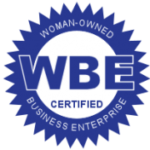Touchpoints for engagement is a critical part of guiding your target audience through the phases of the customer journey. Brands that want to make the most of marketing efforts will create a map, or strategic plan, that will provide guidance for not only which types of leads should be collected, but what lead engagement tactics should be employed. When creating a touchpoints map, brands should keep in mind four key points:
- Tailor your approach
- Lead capture with forms
- Audience building and tracking
- Prioritize lead follow-up
Keep reading for a deeper dive into these best practices.
Customer journey recap
We talked about setting up a foundation for measuring marketing success throughout the customer journey in Part 1 of this series. As a quick recap, the customer journey is the process by which a person interacts with a brand and tracking/following the various stages of that relationship. Measuring that performance is key, as it will help inform the mapping process.
- Tailor your approach
Lead engagement is best accomplished through a tailored approaching that guides the customer through the marketing funnel (customer journey). It’s important to develop a leads’ workflow process that sets the lead engagement plan for the brand. This involves creating a series of steps or strategies in which to connect with, delight and educate the target audience through each phase of the customer journey.
For example, if a brand wanted to move a potential customer from awareness to consideration, the workflow might include providing lead magnets such as eBooks, white papers or free trials. Then, the brand should have a plan for the next step in the sequence based on the customer response to that attempt at lead engagement.
Brands can then qualify leads and assign them a stage of the marketing funnel based on user behavior including time spent on the website, product views and cart abandonment. This will steer the brand to determine what type of lead engagement should be used next.
- Lead capture with forms
To ensure continued lead engagement, brands should collect user information via forms. Decide which information to request (first name, last name, email, appointment date, etc.), and then ensure a response process for when the form is submitted. - Audience building and tracking
Brands should also focus on audience/list building and determining the next level of lead engagement based on needs. This could be for lead generation or only for list building. If list building is the goal, capturing emails for enewsletters and other communication might be enough to start moving the target audience through the marketing funnel. For lead generation, more detailed information might be desired. The brand should then qualify leads and refer to its workflow. - Prioritizing lead follow-up
Brands should ensure prompt follow-up when a customer engages. This means sending a thank you email for signing up for an enewsletter, or similar. Neglecting leads renders lead generation efforts meaningless, so lead follow-up infrastructure must be in place before proceeding with any audience or list-building strategies.
Next-level lead engagement
These basic tactics are a good place to start, but brands that want to make the most of lead engagement to deftly guide the target audience through the marketing funnel will find success by stepping it up a notch. Consider:
Omnichannel approach – Lead engagement that follows your customer through the many touchpoints with your brand with an omnichannel approach. Having strong integration and a cohesive message across all digital and physical (in-store) communication will help keep your target audience in your ecosystem.
Personalization – Personalization can also add to the tailored experience. Customers expect brands to know what they need and to provide marketing and information that is relevant to those needs.
Data – Make sure to check out Part 1 of this series to learn how data collection can lead to measuring success and properly adjusting marketing strategy to make the most of your efforts.
Content marketing – Content marketing plays a big role in engaging customers. The purpose of content creation is to keep the target audience interested and interacting with the brand, providing value without expecting something in return. Here are a couple examples of brands that are shining when it comes to content creation:
Sephora – The beauty retailer teamed up with TikTok to pair influencers with Sephora’s Accelerate BIPOC brand founders. The popular influencers are mentors to the fledgling beauty brands and provide guidance for tutorials and other content on the short-form video platform.

GoPro – The mini video camera leader has tapped adventurous brand advocates to create GoPro Tips, a series of blogs that showcase the camera in use and gives advice for how to best capture amazing moments.
A map for success
Brands should consider a tailored approach when it comes to touchpoints for engagement, capture lead information with forms, use audience building and tracking best practices, and prioritize lead follow up. Additionally, taking lead engagement to the next level with an omnichannel approach, personalization, data capture and content marketing will yield the best results. By building a strategy on these best practices, brands will make the most of lead engagement efforts.
Connect with the team at Beyond Fifteen to learn how our experts can help your brand map touchpoints for engagement and guide your target audience through the customer journey.





